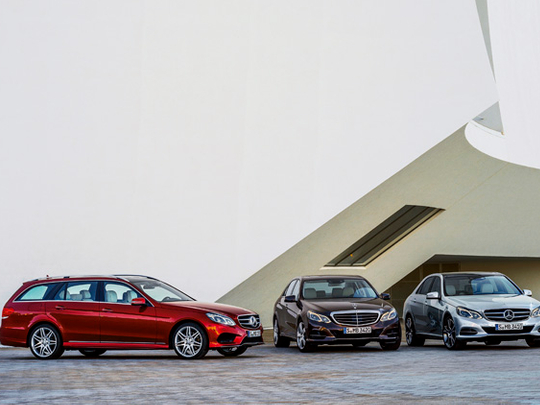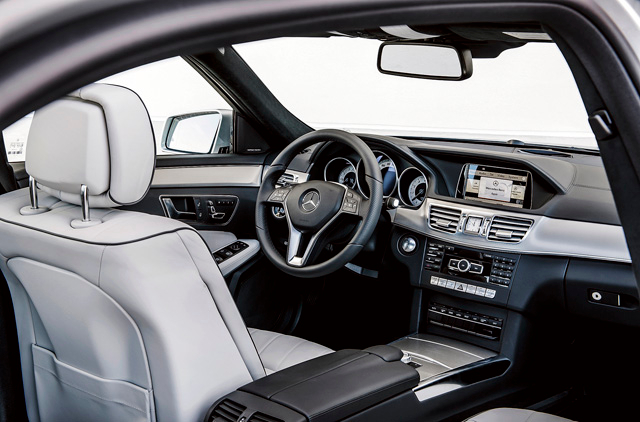
Any other manufacturer would’ve plastered ‘all new’ in block letters all over something like this. But Mercedes-Benz doesn’t pretend. The W212 generation E-Class was launched merely three years ago, and Stuttgart has already given the model a comprehensive mid-life update to answer the catcalls — there was almost universal disdain about the car’s design.
But nowhere will you hear Daimler executives, engineers, or designers pretending this car is all new, even if it looks it. To cull the jeers aimed at the E-Class’s old front end, Mercedes designers have solved the problem by offering you the new car with two front-end styling choices. And if you hate both of them, that’s too bad.
The first fascia design features totally revised headlamps — this time in a single headlamp lens on each side instead of split items — with partial LEDs as standard, and full LEDs optional. If you opt for the Avantgarde trim (which is top-trim unless you figure in AMG specification cars), the new E-Class comes with a different grille incorporating the famous three-pointed star.
Designers additionally restyled the bumpers and bonnet, and cut the dog-leg ahead of the rear wheel arch in favour of a new signature line. At the back, the car gets new rear lights and horizontal LEDs, as well as a different bumper. For the cabin, the designers seem to have made fewer changes, to the untrained eye, but threw in a bunch of higher-quality materials, more precise joints and sharp curves and two-part trim stretching the length of the dashboard with a choice of wood or aluminium trim.
Other interior changes are a revised instrument binnacle, high-gloss framed display unit, air-vent design, centre console, new multifunctional steering wheel and even the analogue clock. More interestingly, Mercedes is previewing the next generation S-Class in this new E-Class with its range of technological updates dubbed ‘Intelligent drive’, with features such as a much more powerful camera positioned behind the windscreen (to detect vehicles and pedestrians), as well as an updated radar system for the Collision Prevention Assist and Distronic Plus cruise control.
On top of those safety systems are also Attention Assist, Steering Assist, Brake Assist, Pre-Safe Braking, Active Lane Keeping Assist, Adaptive Highbeam Assist. Active Parking Assist and even Traffic Sign Assist. Yes, lots of assists… Stuttgart could’ve put its feet up after all these updates, but the engineers wanted more, and added Eco stop-start systems to all engine and transmission variants, additionally expanding the petrol engine line-up — the E 250 now comes with 211bhp instead of the old 204bhp and the E 300 is worth 252bhp (up from 231bhp).
A new addition to the range is the E 400 powered by a twin-turbcoharged 3.0-litre V6 to produce 333bhp and 480Nm of torque, slotting just underneath the range-topping E 500 (obviously, not counting AMG again…) and its 408bhp. Mercedes also updated the seven-speed transmission with a new M-mode feature that reads the driver’s manual changes and remembers delays to take over automatically if needed.
Finally, every E-Class will also arrive in the showrooms with more standard equipment than before, but some new optional kit includes hands-free access, which enables the boot to open by simply waving your foot beneath the bumper, as well as more sat-nav and internet connection options, including a gigantic 17.8cm high-resolution display with Google apps and communication with your home computer. Pretty comprehensive for a mid-life facelift, and we’d even forgive them if they’d called the E-Class all new.












